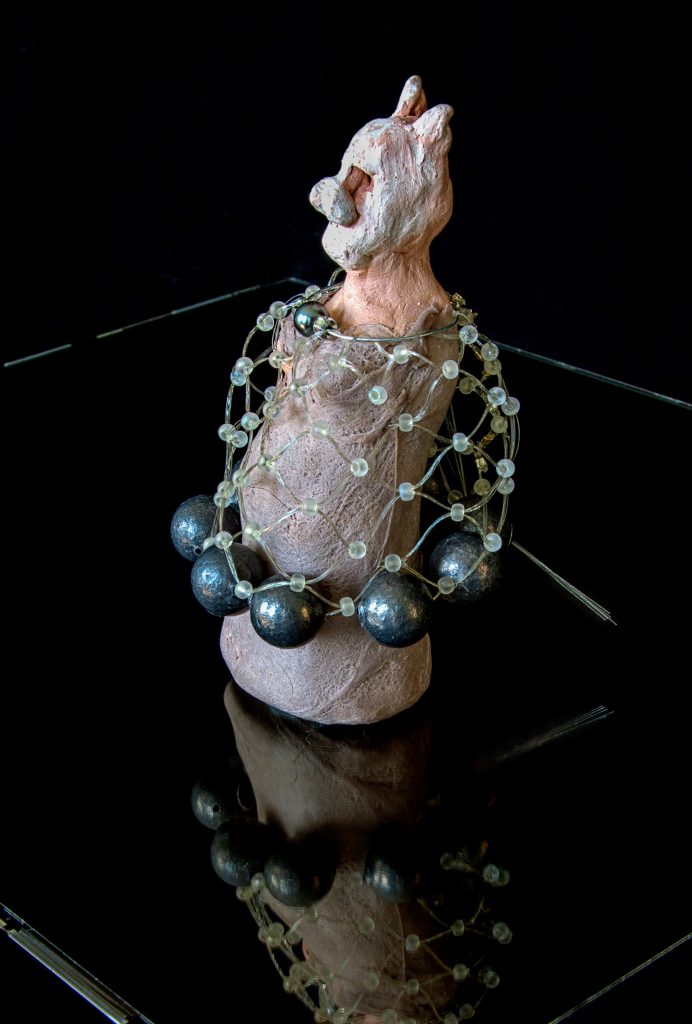
Gringo Katchina
2012
Kilnworked fiberglass insulation, optical fiber, Czech and Chinese glass beads, computer monitor
6 x 4 x 4.5 inches (not including computer monitor glass)
Glass, stoneware clay, musket balls, steel wire, crimp tubes, soap, wire-pulling gel, epoxy
(Photo: Susan Larkin)
After “Fly Ash” was accepted into the New Glass Review 33 competition, I decided I wanted to invent some new ways of making glass art for the next year’s competition. I wrote a list of six types of glass I hadn’t seen used in glass art yet and started experimenting.
Gringo Katchina single-handedly covered half the list: optical fiber, fiberglass insulation, and computer monitor screens. Getting the optical fiber to stay in a woven pattern was one of the hardest things I’ve ever done. The stuff is determined to not stay bent and is extremely fragile. I’ll spare you the details of the agony I put myself through with that. Frankly, I marvel at that cloak of glass beads and woven fiber when I see it now. Trying to control the firing of fiberglass insulation to make the gown was also a high-wire act. Getting the computer monitor glass out of the monitor wasn’t easy either, but nothing compared to other two processes. During the making of this piece I used to say, “Sometimes there’s a reason why things haven’t been done before” a lot.
Getting musket balls started out simple, the first person I asked, my car repair guy, a Revolutionary/Civil War re-enactor, gave me a bag of them. But those ended up not having enough weight. A couple of days before the New Glass Review submission deadline, I found the ones in the final piece online at Cabela’s and had them shipped to me overnight. I got very little sleep for three days finishing and photographing this and the other two pieces for my submission. In the end, I put the entry in the mailbox with about two hours to spare. A couple of years later I learned that people are not allowed to be in the New Glass Review two years in a row.
Katchina, or more commonly “Kachina”, dolls are a tradition of indigenous tribes in the southwestern United States. Often the figures are of deities. I got the idea for this piece back in the 90s during a visit to Native American art exhibit in Brooklyn. I was entranced by the kachina figures and wanted to do one based on the animals I knew the best, cats, our family having had a number of them when I was a teenager. The idea sat around for nearly two decades before I got around to doing it. By this time, the statues on Easter Island had become another influence on the concept.